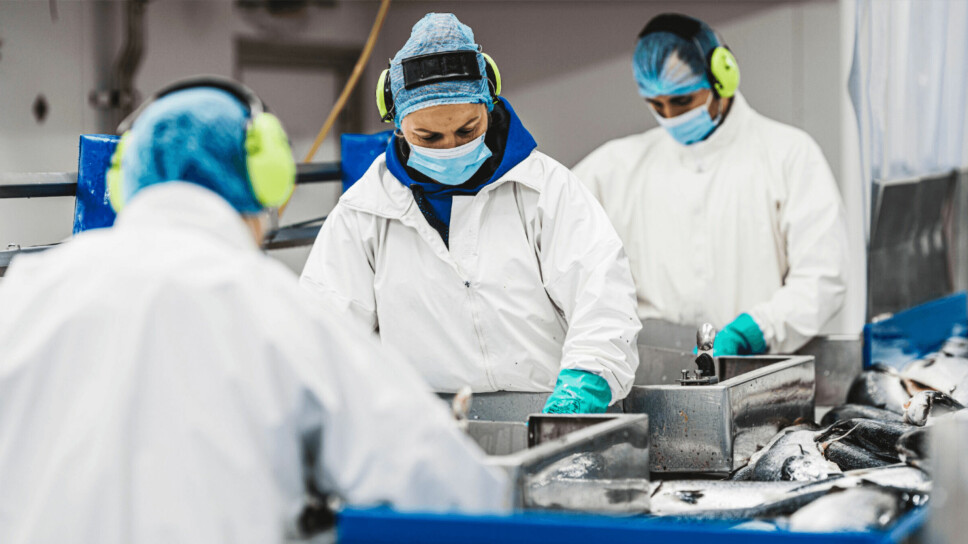
Salmon farmer broadcasts the benefits of humane slaughter
Failsafe stunning better for the fish and finances, Scottish Sea Farms tells Farming Today
The chief vet at one of Scotland’s biggest salmon farmers has stressed the welfare and commercial importance of humane slaughter of fish.
Ronnie Soutar, of Scottish Sea Farms, featured on this morning’s episode of BBC Radio 4’s Farming Today programme, which has this week presented looking at how animals in different sectors are despatched.
Reporter Richard Baynes visited SSF’s South Shian facility near Oban, which handles 35,000 tonnes of fish annually, to see how salmon were slaughtered and processed, and spoke to both Soutar and process manager Donald MacAulay, who explained how fish were electrically stunned.
“Inside the harvest station right now we are processing fish that have a 6.4 kilo average,” said MacAulay. “We’re placing it through our electric stun unit, on to our harvest table, where we have three operators placing the fish into the stun unit. 99% of the fish are stunned first time, and the secondary unit is there to get the final 1% that hasn’t been done, so we get 100% stun on all fish going through the unit.”
Welfare-trained
MacAulay added: “We are 100% RSPCA Assured, we have fish welfare officers in our harvest stations. Right now, the RSPCA requirement is for one fish welfare officer in the harvest station, but we have all the members of staff that work in that area fish welfare trained.”
Soutar said: “There is really good evidence, and has been for some time now, that fish can feel pain. What we don’t know is the emotional part of that, what the suffering element might be. What I have always done as a fish vet, and what I believe my colleagues do in the production side of farming, is we give them the benefit of the doubt.”
He added: “Good welfare and good quality of end-product go absolutely hand in hand. If the fish are maintained in as stress-free as environment as possible, right up until the moment of slaughter, then that has good implications for the quality of the fish going to market.
“People are interested in the provenance of their food and that includes that the animals are treated well, [that] they have a good life and a good death, as it were. I think that’s true for us in aquaculture and there’s nobody more important than the people that buy the fish at the end of the day, they have to be happy with the product.”
An untackled issue
The segment on salmon slaughter was followed by another which highlighted the difference with the wild-caught sector, where fish can suffer slow and distressing deaths from suffocation.
Dr Huw Golledge, the chief executive and scientific director of the Humane Slaughter Association, told presenter Caz Graham that the stunning of wild-caught fish “is one of the really enormous, almost entirely untackled issues in animal welfare”, but pointed out that it would be more difficult to do than it is for salmon farmers.
“In the case of salmon, we know how to stun them electrically. You’ve seen that being done in a farm, so in theory you could bring that technology on to a boat,” said Golledge.
“Obviously, there are some big technical issues. Having high-voltage electrical equipment on a boat, for starters, is a safety concern, I imagine, and also there are issues with the diversity of size of fish because there will be more variation in size of the animals being brought aboard a boat – mackerel and herring, for instance.
“For them we would need to go back a step and establish how to stun them electrically because the parameters will vary for every species, and then bring that on to a boat.”






















































